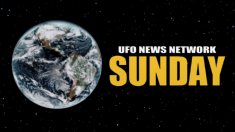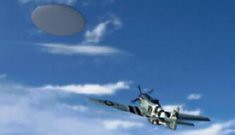| Dr. Garry
Nolan is a Professor of Microbiology & Immunology at Stanford
University as well as being a member of the advisory board for the To
The Stars Academy, a private sector follow up to the 2007-2012 Pentagon UFO study involving many of the same people including Luis Elizondo, who
headed up the Pentagon study and acts as Director of Global Security &
Special Programs for TTS. Over the last several days, Dr. Nolan has been nice enough to answer several questions regarding what we might look for going forward regarding the scientific research taking place as part of that follow up. The following material, while presented in a standard interview format, was compiled from a series of private messages and open conversations at my UFO Facebook group. Obviously, more questions will come up as time goes on and this article will be updated accordingly. NOTE: There have been two significant updates to this initial story so be sure to scroll down the whole way to read the whole story . . . for now. Q: Can you give us a little background on the nature of the recovered materials mentioned in the New York Times story? DR. NOLAN: These are not your grandma's alloys. If these materials truly exist-- they are going to be found to be metamaterials. Though I call them metamaterials-- it's really for lack of a better term. They are probably even more engineered and subtle than that. The science of metamaterials is only a few decades old, but there is a whole ecosystem of new journals growing up around their unexpected and wondrous properties. One way to think about metamaterials is that is, basically, quantum engineering—working with “normal” matter in a way that takes advantage of properties we don’t fully appreciate yet. We draw the physical universe with only 80 elements. I would guess—just hypothesis-- that “they” (an advanced civilization) that we might infer can accomplish some of the feats observed by the pilots understand the subtleties of isotopes and design with all 253 stable isotopes. The metamaterials “they” could design would be more subtle and likely encompass a greater understanding of reality and physics than we know now. Remember, isotopes of a given element have the same electronic configuration, so they form covalent bonds similar to their sister isotopes (though with subtle differences in bond strengths). However, their nuclei have different spins for instance with, at times, unpaired neutrons. The various nuclear configurations gives rise to multiple fascinating opportunities in designing metamaterials. Want to know what your children should be studying in school? Physics, metallurgy, and advanced composite materials. People interested in understanding the reality of what's going on with these metamaterials (so-called alloys) need to understand this: https://en.wikipedia.org/wiki/Isotope . There are 253 isotopes that do not undergo radioactive decay in any reasonable time frame. This page has a table of nuclides where the grey boxes denote the 253 stable isotopes. Some elements, such as aluminum, have only 1 stable isotope. Titanium and nickel each have 5 stable isotopes. Tin (Sn) has eight! There are natural ratios of these isotopes that are largely governed by stellar decay processes, centrifugal forces (solar and other) during planetary formation, and proximity to gamma and other radiation sources. The ratios vary only slightly (maximum a couple percent) across a solar system. Significant variations in isotope ratios imply either engineering of the ratios for a purpose, or that the materials came from somewhere that does not "play by our rules". My suspicion is that a foundational difference is the nuclear spin of these isotopes (and other quantum features associated with different arrangements of the nuclear shells in the different isotopes) that affects how they behave/contribute in these composites or metamaterial structures. We use a lot of these isotopes in my lab at Stanford -- —purely as tags in biology experiments. We don’t come close to using them in the way I am suggesting above. Q: Do any of these metamaterials have shape memory properties? DR. NOLAN: They might, but I have not been following that area. My main interest is in quantum microscopes and how they might manage properties of electromagnetism and entanglement. I am particularly interested, and on record at several conferences, stating that entanglement might offer a whole new way to measure events at a distance for biological and clinical purposes. Q: Is there any sense on what the function of these metamaterials is? Are they part of a vehicle structure or do they have an avionics or propulsion (for lack of better words) application? DR. NOLAN: If I knew the answer to that I'd be filing patents right now. Q: Jacques Vallee has been discussing these materials lately. Have you been working with him at all? DR. NOLAN: Yes, Jacques and I have worked together on many projects. Including his recent discussions on the isotope ratios. Jacques previously worked with Peter Sturrock (Emeritus Professor of Astrophysics here at Stanford) a couple of decades ago on composition of materials from UAP. Q: Would it be fair to say a lot of the "portal" talk surrounding TTS and other efforts is more akin to stable wormholes/Einstein-Rosen bridges? DR. NOLAN: While I don't officially speak for TTS, as I am on "just" the advisory board.... My personal opinion is… Yes. Q: Are you familiar with Aron Wall's work? He's apparently working on some sort of portal/traversable wormhole. DR. NOLAN: I don't know Aron's work, but there are two physicists on the TTS team who might. One of them is a specialist in space time metrics (engineering of space/time). UPDATE FEBRUARY 21: Also, I noticed among the incoming traffic links to this story a very interesting post at a French UFO forum which discusses a presentation by Dr. Jacques Vallee about these advanced and possibly ET materials. The post doesn't provide much detail about what he said but there are a series of photographs which provide tantalizing clues.
UPDATE APRIL 12: It turns out the above pictures are from the 2017 Contact In The Desert conference. Vallee goes into extensive detail about significant differences in the isotopic ratios, as mentioned above by Dr. Nolan. Here is the full video and a big thank you, although it is getting a bit tiresome, to the one and only Peter Mandeville:
Below is a link to a paper written by Professor Peter Sturrock on the Ubatuba material Vallee discusses during the above presentation: http://www.nicap.org/reports/ubatubanal.htm In it, he writes, "it has not proved possible to identify where the material was produced."
It's also important to note some, if not all, of the materials members of the To The Stars Academy have talked about have never been in the government's hands in the first place so obviously FOIAs will be of no use there. Just because TTSA is talking about something doesn't mean the United States government/military ever had it or that the TTSA organization has it.
UPDATE JUNE 12: Hal Puthoff addressed the SSE/IRVA conference a few nights back and went into some detail about UFOs and metamaterials. The full transcript of his talk is here. Here's what he had to say about the materials:
"So let me give you an example of, how this stuff helps people who are chasing these really difficult problems. I’m choosing one here: metamaterials for aerospace use. I’d love to talk about really fancy materials, but they’re classified. However, there’s a lot of materials that have been picked up or provided even in the public domain. I’m going to give an example because it shows exactly what the structure is for how to deal with this. This is an open source sample. It was sent anonymously to talk show host Art Bell. The fellow claimed to be in the military. He said that this sample was picked up in a crash retrieval, and so he sent it by email. So what does that mean? Chain of custody non-existent. Provenance questionable. Could be a hoax. Could be some slag off of some foundry floor or whatever. However, it was an unusual sample, so we decided to take a look at it. It was a multilayered bismuth and magnesium sample. Bismuth layers less than a human hair. Magnesium samples about ten-times the size of a human hair. Supposedly picked up in the crash retrieval of an Advanced Aerospace Vehicle. It looks like it’s been in a crash. The white lines are the bismuth; the darker areas are the magnesium separations. So the question was what about this material, so naturally we looked in all the national labs, we talked to metallurgists, we combed the entire structure of published papers. Nowhere could we find any evidence that anybody ever made one of these. Secondly, some attempts were made to try to reproduce this material, but they couldn’t get the bismuth and magnesium layers to bond. Well, years later, decades later actually, finally our own science moves along. We move into an area called metamaterials, and it turns out exactly this combination of materials at exactly those dimensions turn out to be an excellent microscopic waveguide for very high frequency electromagnetic radiation terahertz frequencies. So, the wavelength is 60 microns, which is a pretty small size. But it turns out because of the metamaterial aspect of this material, those bismuth layers that act as waveguides can be one twentieth the size of the wavelength, and usually when you make a waveguide it’s gotta be about the size of the wavelength. So, in fact this turned out to be a material that would propagate sub-wavelength waveguide effects. Why somebody wants to do that we still don’t know the answer to that. But anyway, it’s amazing we’ve gone through this and this is the kind of structure we go through a lot. You get a material sample with unusual characteristics to be evaluated, the method of manufacture is difficult to assess or reproduce, the purpose of the function is not readily apparent – as with our sample here, and then as our own technical knowledge moves forward we finally see a possible purpose or function comes to light. That sequence is repeated over and over in this particular area." |
The Science Behind The Pentagon UFO Study
Stanford Physicist: We Have Physical Evidence Of UFOs!

Peter Sturrock is an emeritus professor of applied physics at Stanford University and one of the very few scientists who has publicly expressed a great deal of interest in UFOs and acted on that interest by twice surveying colleagues on the subject which resulted in some very surprising findings. He is also unambiguous on one particular category of UFO evidence which he happens to know a little bit about . . . . radar reports.
"Yes - radar is physical evidence," Sturrock stated in an email exchange he was generous enough to grant me.
THE DRAKE EQUATION, THE FERMI PARADOX & THE KARDASHEV SCALE
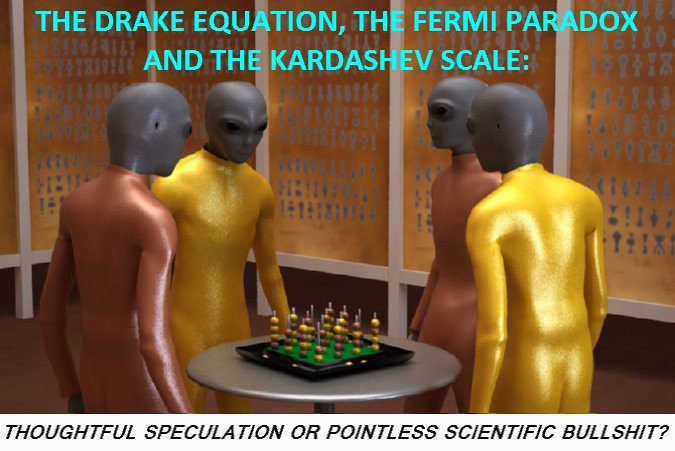
Thoughts regarding the potential for advanced extraterrestrial civilization range from deeply considered speculation from well regarded scientists to inane comments on internet forums that turn every intelligent back-and-forth into an unfunny joke about how stupid humans are in general or, more specifically, how stupid supporters of the opposition political party are. I'm going to take a closer look at three of the most famous scientific ideas that have developed from the ongoing conversation regarding ET and sprinkle in some of my own lowbrow thoughts on the matter.
The Truth Revealed By The FBI-UFO Memos? Truman Didn't Like J. Edgar Hoover!
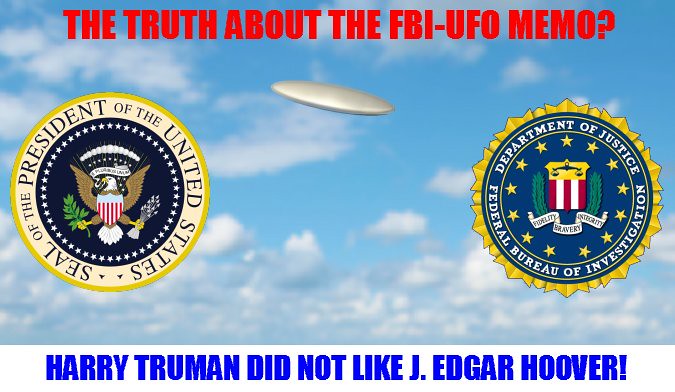
Much has been made about the FBI's new online database for searching through certain available documents, particularly as it relates to one 1950 memo regarding a UFO crash sent directly to then FBI Director J. Edgar Hoover. While it's a memo that has been available awhile, its' existence is new to a lot of people and the memo itself is significant and raises a significant question. Why any interest at all from Hoover if there's nothing to UFOs?
HUMANS & ALIENS: THEIR CONQUEST OF FLIGHT
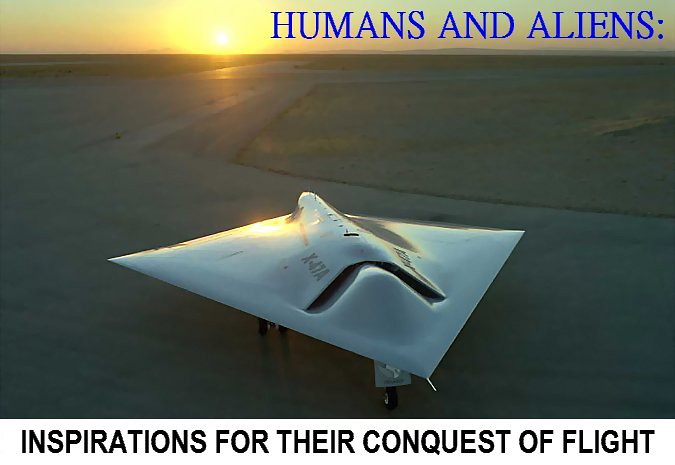
Man probably wanted to fly as soon as he first saw birds in flight. The Greek mythological tale of Icarus and Daedalus, which may have been first told as many as three thousand years ago, evidences this long standing dream. It also provides some evidence as to how man first thought he might accomplish this task . . . by constructing wings of a design similar to those of birds, strapping them on and taking off.
The idea of copying birds, something men obviously knew could fly, clearly didn't die with Icarus. Man's early attempts at powered flight often followed the same logic and, not infrequently, followed with the same fatal results.
Area 51 Founder's UFO Sightings
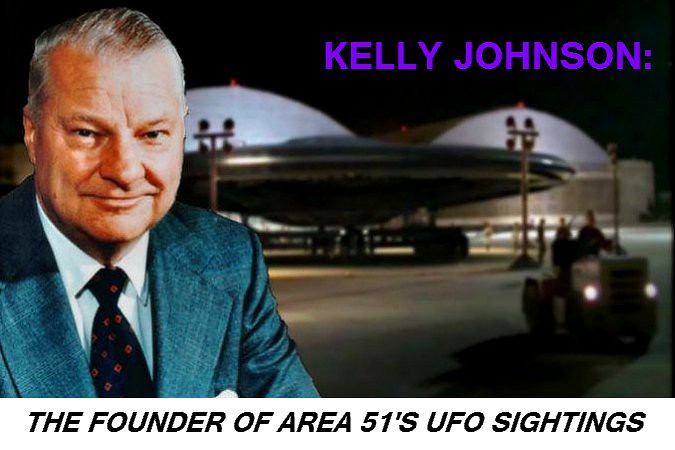
Clarence "Kelly" Johnson was a pioneer in aeronautical engineering and aircraft design and was the visionary behind planes like the X-104 Starfighter and the Blackbird family, which includes the SR-71. He was the first team leader at the famous Lockheed Skunk Works and personally scouted and picked the location for and initiated construction of the airbase at Groom Lake, NV, better known as Area 51.
He also witnessed UFOs with otherworldly capabilities on two occasions and wrote in his official report on his 1953 sighting, "For at least five years I have definitely believed in the possibility that flying saucers exist — this in spite of a good deal of kidding from my technical associates. Having seen this particular object on December 16th, I am now more firmly convinced than ever that such devices exist, and I have some highly technical converts in this belief as of that date."
Labels:
Area 51,
Bob Lazar,
classified,
cover-up,
documents,
extraterrestrial,
founders,
government,
John Lear,
Kelly Johnson,
pilots,
radar,
sightings,
technology,
UFO sightings
Roswell, D-Day And The Titanium Industry

The Roswell crash of early July, 1947 is the best known of all UFO cases. Something fell out of the sky in southeastern New Mexico, no one denies that. Was it an occupied alien spacecraft as many UFO advocates claim or was it a MOGUL balloon outfitted with specialized atmospheric equipment sent aloft as part of a top secret project to monitor the air for evidence of Soviet nuclear weapons testing?
Labels:
atomic bomb,
classified,
conspiracy,
cover-up,
crash,
D-Day,
debris,
documents,
extraterrestrial,
government,
industry,
Manhattan Project,
military,
Roswell,
sightings,
titanium,
World War II
How The Socorro UFO Hoaxers Did It!
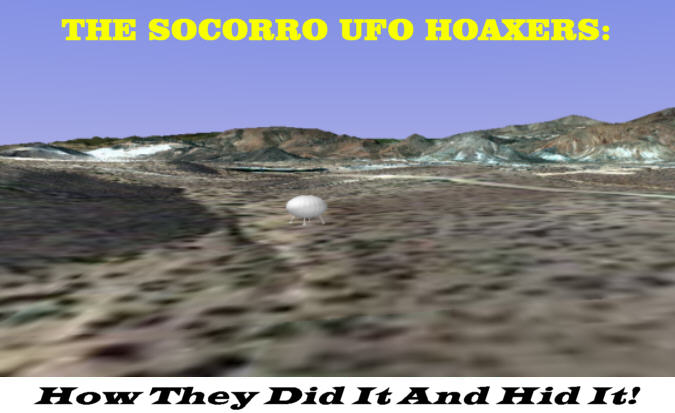
The 1964 UFO "landing" in Socorro, NM has been one of the most famous UFO cases for almost a half century now and should remain so for as long as curious people continue to earnestly investigate the possibility that Earth has been visited by extraterrestrials. I believe that this case was a prank pulled off by New Mexico Institute of Mining And Technology students based on three reasons:
1. Anthony Bragalia's research. Part One Part Two Part Three
2. The geography of the landing site. Perfect for pulling off such an illusion.
3. Lonnie Zamora's detailed Blue Book account.
LINUS PAULING: THE TWO TIME NOBEL WINNER'S HUNT FOR UFOS
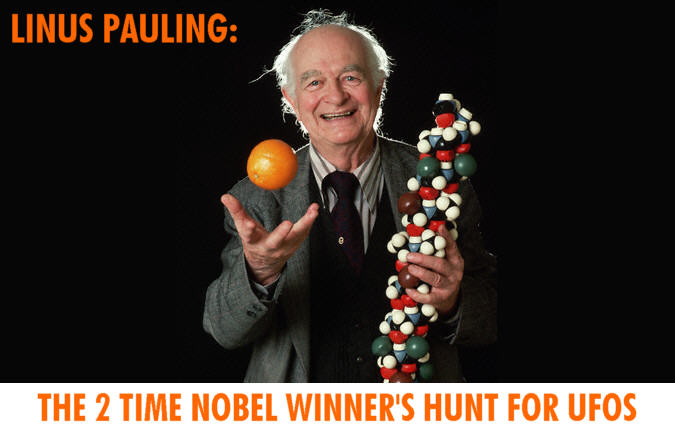
Linus Pauling was one of the greatest men who ever lived. He was a chemist, professor, best-selling author and both a peace and health activist. He was a pioneer in the fields of quantum chemistry and orthomolecular medicine and Francis Crick, the co-discoverer of DNA, called him "the father of molecular biology." He is among the most important scientists in any field in any century. He also developed a fascination for UFOs and the possibility of alien visitation.
ASTRONAUT DEKE SLAYTON'S AMAZING UFO ENCOUNTER

Deke Slayton was one of the original NASA Mercury Seven astronauts. He served as NASA's Director of Flight Crew Operations for nine years and as the docking module pilot of the Apollo-Soyuz Test Project in 1975, which was also the last flight of an Apollo spacecraft.
On December 12, 1951, Slayton had an extraordinary aerial experience while testing out a P-51 Mustang in the skies over Minnesota. He described it in his 1995 autobiography, Deke!:
THE REAL MAJESTIC 12: TRUMAN'S 1952 DC UFO MEETING

The Washington DC UFO Incident is one of the most significant cases ever documented. Sightings from both commercial and military pilots were recorded as well as radar hits from both military and commercial radarscopes, one of which reached 7000 mph. There were multiple events spread out over the last half of July in 1952. The press conference that was held by the Air Force to attempt to explain the event, presided over by General John Samford, was the largest held up to that point since the end of World War II.
Labels:
1952,
Air Force,
CIA,
classified,
cover-up,
DC,
documents,
extraterrestrial,
government,
meeting,
national security,
Project Blue Book,
radar,
technology,
Truman,
UFO sightings,
White House
Subscribe to:
Posts (Atom)


